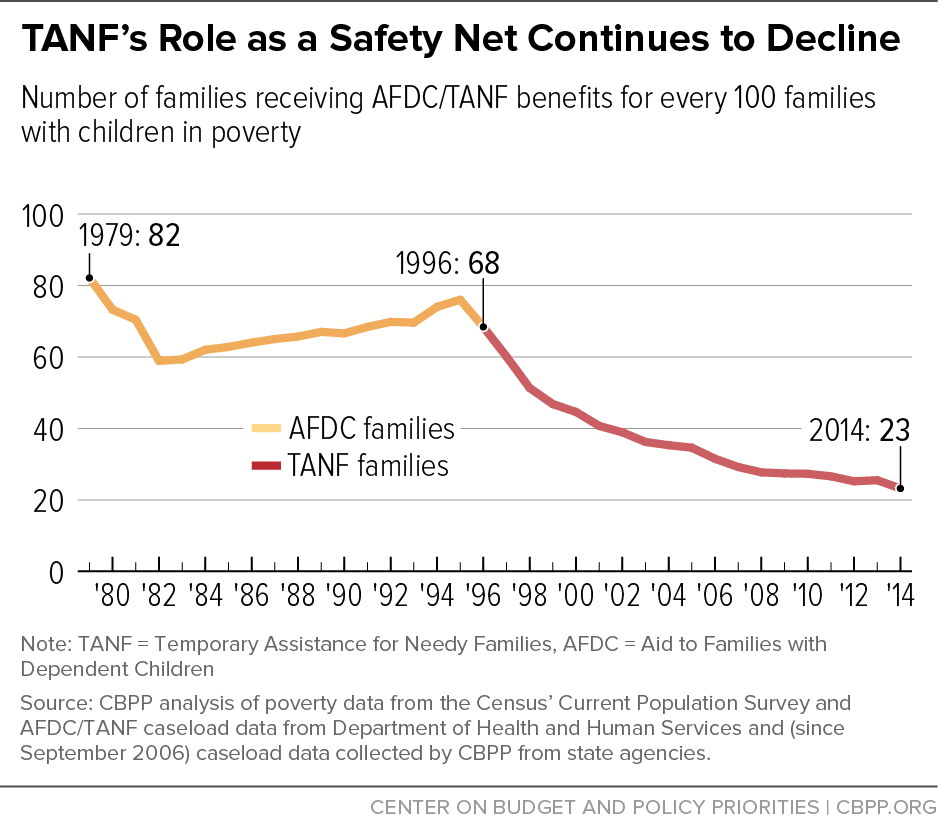BEYOND THE NUMBERS
Most of the Republican presidential candidates at Saturday’s GOP poverty forum called for changing anti-poverty programs to measure results rather than inputs. Policymakers would do well to adopt reforms along those lines in the Temporary Assistance for Needy Families (TANF) program.
States have extensive flexibility over how they use TANF block grant funds. And as we’ve shown, they haven’t always used their state and federal TANF dollars for TANF’s core purposes of basic cash assistance, child care, and work programs. Moreover, states aren’t held accountable for results. Most states don’t even collect data on whether TANF recipients find employment or earn enough to escape poverty.
The research shows TANF’s track record is mixed. TANF hasn’t provided an effective safety net for poor children, which the research suggests may be important for children to have a better chance of success in school and later in life. And though TANF is supposed to focus on work, states invest little in preparing parents for employment or helping them obtain good jobs.
As we near TANF’s 20th anniversary, Congress can focus the program more on work and opportunity by:
- Shifting the focus from merely engaging recipients in activities to improving actual employment outcomes.
Congress should hold states accountable for placing recipients in jobs that help them escape poverty. TANF’s core work measure — the work participation rate — doesn’t focus on employment outcomes, so states don’t track how recipients fare after they leave the program. Instead, the measure looks at participation in a limited set of activities without regard to whether they effectively meet individuals’ needs or help them get and keep a job.
- Putting basic education and skills training on par with other work activities.
Many TANF recipients lack the basic skills and education that many employers require. By focusing on immediate employment, the TANF work participation rate discourages states from allowing and supporting successful participation in basic education or skills training programs. As a result, state TANF programs do little to prepare recipients to compete effectively in today’s labor market.
- Shifting incentives from reducing caseloads to providing access to TANF to promote greater opportunity.
TANF can’t reduce poverty, provide opportunity, or help connect parents to work if it doesn’t reach poor families. Yet it now provides a temporary safety net to surprisingly few poor families who lack other means to meet their family’s basic needs. In 2014, for every 100 families with children in poverty, just 23 received TANF cash benefits. That’s down from the 68 such families for every 100 in poverty who received cash assistance when TANF was enacted in 1996 (see chart).

- Targeting state and federal TANF funding to core welfare reform purposes, including work and child care.
TANF’s proponents argued in 1996 that with more flexibility, states could take the block grant funds freed up when families left welfare for work and shift them to child care or other work supports, where need would increase. Proponents also expected states to invest more in work programs to reflect the increased emphasis on welfare being temporary and work-focused. As noted above, this trio of basic assistance, child care, and work activities form the core purposes of welfare reform. Yet, states devote only half of their federal and state TANF funds to these purposes — and use only about 8 percent of TANF funds to prepare recipients for work.
States have essentially diverted the other half of TANF funds to an array of other purposes, sometimes substituting federal TANF funds for funds that states had previously spent on various services, thereby enabling states to shift the freed-up funds to purposes unrelated to helping more families find jobs and escape poverty.
But TANF can improve. The House Ways and Means Subcommittee on Human Resources released a legislation discussion draft last summer that could help pave the way for needed changes. That draft doesn’t go far enough in addressing some of TANF’s worst shortcomings, but it represents a useful start. Policymakers should take the draft legislation and add key improvements that TANF needs to fulfill its promise of connecting poor families to work and opportunity.
Check our site in the coming days for more about poverty, the safety net, and work.

